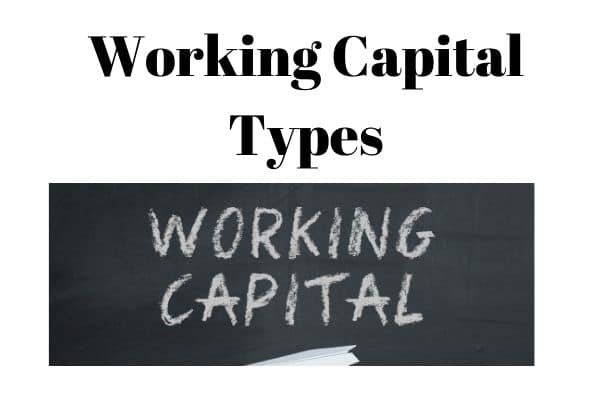Net Working Capital Formula Accounting with Calculator Examples

Net Working capital is the most important financial tool for the successful operational activity of business working capital for an organization represents its liquidation portion. The working capital ensures the management of the business to continue business operational activities or to stop it. The management also ensures that the firm has sufficient cash flow for repayment of the short and long debts financing and also effectively meet the upcoming operational expenses of the business. Working capital helps the manager to find the current assets and current liabilities of the business and also create the interrelationship between them such as given below its accounting formula;
Working Capital = Current Assets – Current liabilities
Current assets are those which can be easily converted into cash within a short period of time without devaluation of the assets. Current liabilities refer to all those liabilities which are repayable within one year out of the current assets and earning of the current period, Such as accounts payable, bills payable, bank overdraft and creditors etc.
The basic objective of management of any business to effectively manage the total current assets and current liabilities of the business for receiving the high range of working capital Working capital is the main key of success for every business which totally depends on its effective management. Working capital represents the financial strength and weakness of the business. With the Help of Accounting Rules, you can understand it easily.
NETWORKING CAPITAL
When the working capital is high then the companies show it strong financial position and also show successful operating activities. Companies make a high investment in current assets which make it liquidity position strong.
When the working capital is low, companies are not sufficient companies meet their operational activities effective and also show its weak liquid position which indicates that companies are not sufficient to repay their short-term debts.
CONCEPTS AND DEFINITIONS OR WORKING CAPITAL
These are the two main concepts of working capital in the business.
- Gross working capital
- Networking capital
Gross working capital
Gross working capital has consisted of the total of the whole business current assets.
Gross working capital = Total current assets
Networking capital
Net working capital is obtained by two different ways in the business.Net working capital is obtained by the comparison of current assets and current liabilities
Networking capital= Current Assets- Current Liabilities
Networking capital is obtained by estimation of which portion of current assets in financed against the long-term funds.
Long term funds=Total debts + Equity
Financing mix for working capital
There are two major sources through which the companies can be raised fund for current assets financing.
Short-term sources of finance such as the current liabilities which are payable within a short time against current assets.
Long-term sources of financing have consisted of shareholder equity, long term debts, debentures, internally generated resources such as retain earning of the business.
Operating cycle and working capital
The working capital need of any firm depends on its operating cycle. The operating cycle of the business is the first starting point from which the raw material is converted to final goods and after this to realize the total sale of the business. The length of the operating cycle is varying from one firm to another firm because it depends on the size and nature of the firm operational activities. The operational cycle of the firm consists of the steps which required the time for the completion of each step chronologically sequence.
- Operational cycle of business
- Raw material and services needs
- Conversion of raw material into work in process
- Convert WIP into finished goods
- Cost of goods sold
- Convert debts into cash
All these steps are timely responsible for the movement of working capital. These are some ratio analysis is determined on the basis of relationship and comparison between the variables Such as Inventory conversion periods, debtors conversion periods, stock conversion periods and creditors conversion periods.
Inventory conversion period
Inventory conversion period=Average inventory /Cost of goods sold
It represents the movement of the stock. Which is control by the operating working capital of the business is within a short period of time which is considered acceptable.
Receivable conversion period
Receivable conversion period= Accounts receivable/ Annual credit sales
Business easily achieved a high level of credit sale due to the presence of office working capital in the business.
Requirement of working capital
- It is the need for every level of business operating activities.
- It is required for the fulfilment of the production cycle.
- It is required for the formulation of production policies.
- It is very helpful to meet the fluctuation of the business cycle.
- Business can easily expand and also grow their business.
- That is used to maximize the profit of a business and improve its operating efficiency.
Policies for working capital
Working capitals in every organization control and manage by the business using various policies and procedures which make by management. There are basically three types of policing for controlling of working capital.
- Modern working capital policy
- Conservative working capital policy
- Aggressive working capital policy
All these policies describe the relationship between working capital, sales and current assets of the firm.
Types of working capital
Working capital is classified into two types such as given below:
- Permanent working capital
- Temporary working capital

Permanent working capital
This is the maximum level of capital that the firm regularly required daily basis to meet the operating needs of the business. Such as the Cash, Stock, and Receivables….etc
Temporary working capital
This is the additional working capital above and under the permanent working capital which the business is required to meet the additional needs of the business. Such as for the improvement of sales volume…etc.
The basic objective of management of any business to effectively manage the total current assets and current liabilities of the business for receiving a high range of working capital. For the management of every business is necessary to maintain the sufficient and satisfactory working capital of the business. Working capital is the main key to success for every business which totally depends on its effective management policies and procedures.
